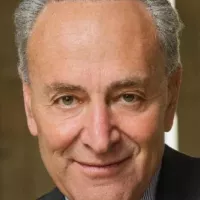Amtrak, formally the National Railroad Passenger Corporation, is the primary passenger railroad service in the United States. It provides intercity rail connections across most of the contiguous U.S., excluding Wyoming and South Dakota, and extends into some Canadian provinces. The name Amtrak is a combination of the words "America" and "track," reflecting its role in connecting the nation through rail transport.
1916: Rail travel in 1916
In 1916, 98% of all commercial intercity travelers in the United States moved by rail. Nearly 42 million passengers used railways as their primary transportation at that time.
1940: Railroads in 1940
By 1940, railroads held 67 percent of commercial passenger-miles in the United States. Passenger-miles had fallen by 40% since 1916, from 42 billion to 25 billion.
1945: Railroad Market Share surged to 74% in 1945
In 1945, aided by troop movement and gasoline rationing during World War II, the railroad's market share surged to 74%, with a massive 94 billion passenger-miles.
1950: Passenger travel percentages fell to 46% by 1950
Even as postwar travel exploded, passenger travel percentages of the overall market share fell to 46% by 1950.
1957: Deficits reached $723 million in 1957
The railroads had lost money on passenger service since the Great Depression, but deficits reached $723 million in 1957.
1958: Passenger service route-miles fell from 107,000 miles in 1958
Passenger service route-miles fell from 107,000 miles (172,000 km) in 1958 to 49,000 miles (79,000 km) in 1970.
1961: 1961 Doyle Report
The 1961 Doyle Report proposed that the private railroads pool their services into a single body.
1965: Similar proposals were made in 1965
Similar proposals were made in 1965 and 1968 but failed to attract support.
1967: Mail diversion in 1967
In late 1967, the diversion of most United States Post Office Department mail from passenger trains to trucks, airplanes, and freight trains deprived those trains of badly needed revenue.
1968: Similar proposals were made in 1968
Similar proposals were made in 1965 and 1968 but failed to attract support.
1969: Multiple proposals in 1969
In late 1969, multiple proposals emerged in the United States Congress, including equipment subsidies, route subsidies, and, lastly, a "quasi-public corporation" to take over the operation of intercity passenger trains.
June 21, 1970: Penn Central filed to discontinue passenger trains
On June 21, 1970, the Penn Central, the largest railroad in the Northeastern United States and teetering on bankruptcy, filed to discontinue 34 of its passenger trains.
October 1970: Rail Passenger Service Act passed in October 1970
In October 1970, Congress passed, and President Richard Nixon signed into law the Rail Passenger Service Act, leading to the creation of the National Railroad Passenger Corporation (NRPC).
1970: Railroads declining to join NRPC in 1970
In 1970, of the 26 railroads still offering intercity passenger service, only six declined to join the NRPC.
1970: Amtrak Founded
In early 2007, Amtrak employed 20,000 people in 46 states and served 25 million passengers a year, its highest number since its founding in 1970.
1970: Passenger service route-miles fell to 49,000 miles in 1970
Passenger service route-miles fell from 107,000 miles (172,000 km) in 1958 to 49,000 miles (79,000 km) in 1970, the last full year of private operation.
1970: Rail Passenger Service Act
The Rail Passenger Service Act of 1970, which established Amtrak, specifically states that, "The Corporation will not be an agency or establishment of the United States Government".
January 28, 1971: Final list of routes on January 28, 1971
Further wrangling between the DOT and the White House produced the final list of routes on January 28, 1971, adding 5 additional routes to the November 30 draft.
May 1, 1971: Amtrak began operations on May 1, 1971
Amtrak began operations on May 1, 1971, inheriting no rail tracks or rights-of-way. Amtrak continued only 184 of the 366 train routes that had operated previously.
1971: Amtrak commenced operations
Amtrak commenced operations in 1971 with $40 million in direct federal aid, $100 million in federally insured loans, and a somewhat larger private contribution.
1971: Founded in 1971
Amtrak was founded in 1971 as a quasi-public corporation to operate many U.S. passenger rail routes. It receives state and federal subsidies but operates as a for-profit entity.
1971: Leasing passenger cars in 1971
In 1971, Amtrak leased around 1,200 of the best passenger cars and locomotives initially retained the paint schemes and logos of their former owners which resulted in Amtrak running trains with mismatched colors – the "Rainbow Era".
1971: Common stock was issued
In 1971, common stock was issued to railroads that contributed capital and equipment to Amtrak.
1971: Formation of Amtrak was criticized
The formation of Amtrak in 1971 was criticized as a bailout serving corporate rail interests and union railroaders, not the traveling public.
March 1972: Alternate routing was adopted in March 1972
The trains serving Central Station continued to use that station until an alternate routing was adopted in March 1972.
1972: Ridership increased from 16.6 million in 1972
Amtrak's ridership increased from 16.6 million in 1972 to 21 million in 1981.
1972: Amtrak carried 15.8 million passengers
In 1972, its first full year of operation, Amtrak carried 15.8 million passengers.
1973: Increase to daily service by 1973
The creation of the Los Angeles–Seattle Coast Starlight from three formerly separate train routes was an immediate success, resulting in an increase to daily service by 1973.
1974: Fortune magazine exposed the manufactured mismanagement in 1974
After Fortune magazine exposed the manufactured mismanagement in 1974, Louis W. Menk, chairman of the Burlington Northern Railroad, remarked that the story was undermining the scheme to dismantle Amtrak.
1974: Expectations of breaking even by 1974 were unrealistic
Officials expected that Amtrak would break even by 1974, but those expectations proved unrealistic.
1975: Official Amtrak color scheme by 1975
By 1975, the official Amtrak color scheme was painted on most Amtrak equipment and newly purchased locomotives and the rolling stock began appearing.
1975: Believed Volpe would make a $24 million profit by 1975
On November 24 Volpe presented his initial draft consisting of 27 routes to Nixon, which he believed would make a $24 million profit by 1975.
April 1, 1976: Amtrak acquired the majority of the NEC on April 1, 1976
Amtrak acquired the majority of the Northeast Corridor (NEC) on April 1, 1976, following the bankruptcy of several northeastern railroads.
February 1978: Amtrak moved its headquarters in February 1978
In February 1978, Amtrak moved its headquarters to 400 North Capitol Street NW, Washington D.C.
1978: The Amtrak Standard Stations Program launched in 1978
The Amtrak Standard Stations Program was launched in 1978 and proposed to build a standardized station design across the system.
1981: Ridership increased to 21 million in 1981
Amtrak's ridership increased from 16.6 million in 1972 to 21 million in 1981.
1981: Annual direct federal aid reached a 17-year high
Annual direct federal aid to Amtrak reached a 17-year high in 1981 of $1.25 billion.
1981: Uncertain Government Aid
From 1981 to about 2000, Amtrak's ridership stagnated at roughly 20 million passengers per year, amid uncertain government aid.
1982: William Graham Claytor Jr. Becomes Amtrak's Leader
In 1982, William Graham Claytor Jr., former Secretary of the Navy and retired Southern Railway head, took over as the head of Amtrak. Claytor had previously criticized Amtrak's management and, despite clashes with the Reagan administration, maintained good relationships with key figures. Limited funding led to the use of short-term debt to finance operations.
1983: Amtrak Adds California Zephyr and Revives Auto Train
In 1983, Amtrak introduced the California Zephyr, running between Oakland and Chicago via Denver, and revived the Auto Train, a service for passengers and their vehicles between Lorton, Virginia, and Sanford, Florida, along the I-95 corridor.
1986: Federal support fell to a decade low
By 1986, federal support for Amtrak fell to a decade low of $601 million.
1988: Lowest Freight-Rail Traffic Volumes
In 2009, Amtrak's improved performance coincided with the lowest freight-rail traffic volumes since at least 1988, reducing impediments to passenger traffic.
1991: Empire Connection Tunnel Opens
In 1991, the Empire Connection tunnel opened, allowing Amtrak to consolidate all New York services at Penn Station.
1991: The Empire Connection was built in 1991
In New York City, Amtrak had to maintain two stations (Penn and Grand Central) due to the lack of track connections to bring trains from upstate New York into Penn Station; a problem that was rectified once the Empire Connection was built in 1991.
October 1992: Amtrak Tests X 2000 Train
In October 1992, Amtrak began test runs of the X 2000 train leased from Sweden, which lasted until January 1993.
January 1993: End of X 2000 Train Test Runs
In January 1993, Amtrak ended the test runs of the X 2000 train leased from Sweden, which had begun in October 1992.
September 1993: End of X 2000 Revenue Service
In September 1993, Amtrak concluded the revenue service of the X 2000 train between Washington, D.C. and New York City, which had started in February and continued from August to September.
1993: Thomas Downs Becomes Amtrak's President
In 1993, Thomas Downs succeeded Claytor as Amtrak's fifth president, with the goal of "operational self-sufficiency".
1995: Amtrak was on the brink of a cash crisis
By 1995, Amtrak was on the brink of a cash crisis and unable to continue to service its debts.
1997: Congress authorized $5.2 billion for Amtrak over five years
In 1997, Congress authorized $5.2 billion for Amtrak over the next five years, largely to complete the Acela capital project.
1997: Amtrak Receives Tax Refund
In 1997, Congress included a provision in the Taxpayer Relief Act that provided Amtrak with a $2.3 billion tax refund, resolving a cash crisis. However, Congress also instituted a "glide path" to financial self-sufficiency.
1997: Congress released Amtrak from a prohibition on hiring contractors outside the corporation
In 1997, Congress released Amtrak from a prohibition on hiring contractors outside the corporation (and outside its unions), which led to many employees working without a contract.
1998: George Warrington Becomes Amtrak President
In 1998, George Warrington became the sixth president of Amtrak, tasked with making the company financially self-sufficient. Amtrak tried to expand into express freight shipping, placing it in competition with freight railroads and the trucking industry.
March 9, 1999: Amtrak Unveils Acela Express Plan
On March 9, 1999, Amtrak revealed its plans for the Acela Express, a high-speed train on the Northeast Corridor between Washington, D.C., and Boston. The plan included changes to the corridor, such as the Northend Electrification Project and grade crossing improvements.
1999: Most recent contract signed
The most recent contract for Amtrak employees was signed in 1999 and was mainly retroactive.
2000: End of period of uncertain government aid
From 1981 to about 2000, Amtrak's ridership stagnated at roughly 20 million passengers per year, amid uncertain government aid.
2000: Stagnant Ridership Due to uncertain government aid
From 1981 to about 2000, Amtrak's ridership stagnated at roughly 20 million passengers per year, amid uncertain government aid.
2000: Inauguration of the Acela
In late 2000, the inauguration of the high-speed Acela generated considerable publicity and led to major ridership gains for Amtrak.
2002: Railroads declined a buy-out offer
In 2002, railroads holding common stock in Amtrak declined a buy-out offer by Amtrak.
2002: David L. Gunn Replaces Warrington
In early 2002, David L. Gunn replaced Warrington as the seventh president of Amtrak. Gunn argued that no form of passenger transportation in the United States is self-sufficient and dropped most freight express business to focus on eliminating deferred maintenance.
2003: Amtrak did not achieve self-sufficiency
While Amtrak made financial improvements after 1997, it did not achieve self-sufficiency by 2003 as mandated by Congress.
2004: Cutbacks in services and routes
In 2004, a stalemate in federal support of Amtrak forced cutbacks in services and routes as well as the resumption of deferred maintenance.
2005: Amtrak's carbon dioxide equivalent emissions per passenger
In 2005, Amtrak's carbon dioxide equivalent emissions per passenger were 0.411 lbs/mi (0.116 kg per km).
2005: Congress appropriated about $1.2 billion for Amtrak
In fiscal year 2005, Congress appropriated about $1.2 billion for Amtrak, $300 million more than President George W. Bush had requested.
2005: Gunn Fired Amid Privatization Disagreement
Late in 2005, Amtrak's president, Gunn, was fired following disagreements over a plan by the Bush administration to privatize parts of Amtrak.
2006: Amtrak received just under $1.4 billion
In 2006, Amtrak received just under $1.4 billion, with the condition that Amtrak would reduce food and sleeper service losses, leading to simplification of dining services.
2006: Amtrak Seeks Funding
In late 2006, Amtrak unsuccessfully sought annual congressional funding of $1 billion for ten years.
October 2007: Senate passed S. 294
In October 2007, the Senate passed S. 294, the Passenger Rail Improvement and Investment Act of 2007.
2007: Inspector General confirmed that Amtrak would need at least $1.4 billion to $1.5 billion in fiscal 2006
In Congressional testimony, the DOT Inspector General confirmed that Amtrak would need at least $1.4 billion to $1.5 billion in fiscal 2006 and $2 billion in fiscal 2007 just to maintain the status quo.
2007: Amtrak's Highest Ridership Since 1970
In early 2007, Amtrak employed 20,000 people in 46 states and served 25 million passengers a year, its highest number since its founding in 1970.
May 2008: Amtrak saw record ridership due to rising gasoline prices
During 2007-08, with the dramatic rise in gasoline prices, Amtrak saw record ridership; regional lines saw 12% year-over-year growth in May 2008.
June 11, 2008: Similar bill passed the House with a veto-proof margin
On June 11, 2008, a bill similar to S. 294 passed the House with a veto-proof margin (311–104).
October 16, 2008: Passenger Rail Investment and Improvement Act of 2008 was signed into law
On October 16, 2008, the Passenger Rail Investment and Improvement Act of 2008 was signed into law by President Bush, appropriating $2.6 billion a year in Amtrak funding through 2013.
2008: Amtrak first offered free Wi-Fi service to passengers aboard the Downeaster
In 2008, Amtrak first offered free Wi-Fi service to passengers aboard the Downeaster.
2008: Investigation into Railroad Dispatching Practices
In 2008, an investigation into railroad dispatching practices led to stricter laws about train priority. The California Zephyr had a 5% on-time record.
2008: Joseph H. Boardman Becomes Amtrak President and CEO
In late 2008, Joseph H. Boardman replaced Kummant as president and CEO of Amtrak.
2009: As many as 24 simultaneous contracts
As of 2009, Amtrak workers are represented by 14 separate trade unions, with as many as 24 simultaneous contracts between them, complicating contract negotiations.
2009: Improved On-Time Performance
In 2009, Amtrak's overall on-time performance increased to 84.7% from 74.7% in fiscal 2008, with significant improvements for long-distance trains. The Missouri River Runner jumped from 11% to 95%, the Texas Eagle went from 22.4% to 96.7%, and the California Zephyr went up to 78.3%.
2010: Amtrak stated that the backlog of needed repairs of the track it owns on the Northeast Corridor
Amtrak stated in 2010 that the backlog of needed repairs of the track it owns on the Northeast Corridor included over 200 bridges, tunnels under Baltimore dating to the American Civil War era and functionally obsolete track switches which would cost $5.2 billion to repair.
2010: Amtrak offered free Wi-Fi service to passengers aboard the Acela and the Northeast Regional trains
In 2010, Amtrak offered free Wi-Fi service to passengers aboard the Acela and the Northeast Regional trains on the NEC.
2010: Amtrak's farebox recovery was 79%
In 2010, Amtrak's farebox recovery was 79%, the highest reported for any U.S. passenger railroad.
2010: Senate approved a bill to provide $1.96 billion to Amtrak
In 2010, the Senate approved a bill to provide $1.96 billion to Amtrak, but cut the approval for high-speed rail to a $1 billion appropriation.
2010: Passage of the Wicker Amendment
With the passage of the Wicker Amendment in 2010, passengers are allowed to put lawfully owned, unloaded firearms in checked Amtrak baggage, reversing a decade-long ban on such carriage.
May 7, 2011: Amtrak Celebrates 40th Anniversary
On National Train Day, May 7, 2011, Amtrak began its 40th-anniversary festivities across the country, which would continue until May 2012.
May 2011: Amtrak Celebrates 40th Anniversary
From May 2011 to May 2012, Amtrak celebrated its 40th anniversary with festivities across the country. A commemorative book was published, a documentary was created, six locomotives were painted in Amtrak's prior paint schemes, and an Exhibit Train toured the country.
November 2011: Amtrak launched an e-ticketing system on the Downeaster
In November 2011, Amtrak launched an e-ticketing system on the Downeaster.
2011: Amtrak Announces Gateway Program
In 2011, Amtrak announced its intention to improve and expand the high-speed rail corridor from Penn Station in NYC, under the Hudson River in new tunnels, and double-tracking the line to Newark, NJ, called the Gateway Program.
2011: Amtrak offered free Wi-Fi service to passengers aboard the Amtrak Cascades
In 2011, Amtrak offered free Wi-Fi service to passengers aboard the Amtrak Cascades.
2011: U.S. Congress granted Amtrak funding
In Fiscal Year 2011, the U.S. Congress granted Amtrak $563 million for operating and $922 million for capital programs.
May 2012: End of Amtrak's 40th Anniversary Celebration
From May 2011 to May 2012, Amtrak celebrated its 40th anniversary with festivities across the country. A commemorative book was published, a documentary was created, six locomotives were painted in Amtrak's prior paint schemes, and an Exhibit Train toured the country.
July 30, 2012: Amtrak rolled out e-ticketing system nationwide
On July 30, 2012, Amtrak rolled out its e-ticketing system nationwide, which was intended to improve safety and security, en route reporting, and financial reporting.
December 2013: Boardman Named Railroader of the Year
In December 2013, Railway Age magazine named Boardman "Railroader of the Year", noting his long tenure as head of Amtrak.
2013: Amtrak dealt with a year-over-year cut in 2013 federal appropriations
In 2013, despite an initial request for more than $2.1 billion in funding, Amtrak dealt with a year-over-year cut in federal appropriations, dropping to under $1.4 billion.
2013: Amtrak funding through 2013
On October 16, 2008, the Passenger Rail Investment and Improvement Act of 2008 was signed into law by President Bush, appropriating $2.6 billion a year in Amtrak funding through 2013.
February 2014: Amtrak rolled out Wi-Fi on corridor trains out of Chicago
In February 2014, Amtrak rolled out Wi-Fi on corridor trains out of Chicago, aiming to provide Wi-Fi access to about 85% of all Amtrak passengers nationwide through the AmtrakConnect service.
February 2015: Shares of common stock as of February 2015
As of February 2015, there were 9.4 million shares of common stock, with a par value of $10 per share, held by American Premier Underwriters (53%), BNSF (35%), Canadian Pacific (7%) and Canadian National (5%).
December 9, 2015: Boardman Announces Departure
On December 9, 2015, Boardman announced his plans to leave Amtrak in September 2016.
August 19, 2016: Moorman Named Boardman's Successor
On August 19, 2016, the Amtrak Board of Directors named Charles "Wick" Moorman as Boardman's successor, effective September 1, 2016.
September 1, 2016: Moorman Assumes Role as Amtrak CEO
On September 1, 2016, Charles "Wick" Moorman began his role as Amtrak's CEO, succeeding Boardman. He took no salary and saw his role as transitional.
September 2016: Boardman Leaves Amtrak
On December 9, 2015, Boardman announced his plans to leave Amtrak in September 2016.
November 17, 2016: Gateway Program Development Corporation Formed
On November 17, 2016, the Gateway Program Development Corporation (GDC) was formed to oversee rail infrastructure improvements known as the Gateway Program, a partnership between New York, New Jersey, and Amtrak.
June 2017: Richard Anderson Announced as Amtrak President & CEO
In June 2017, it was announced that Richard Anderson, former Delta and Northwest Airlines CEO, would become Amtrak's next President & CEO, starting on July 12.
2017: New policy requiring arbitration
After settling for $17 million in the 2017 Washington state train crash, to prevent further lawsuits, the board adopted a new policy requiring arbitration.
2017: Amtrak absorbed the Chicago Union Station Company
In 2017, Amtrak absorbed the Chicago Union Station Company, formerly a wholly owned subsidiary.
March 2018: First report card issued to host railroads
In March 2018, Amtrak issued its first "report card" to host railroads, grading them based on their impact on on-time performance. The report card included one A grade given to Canadian Pacific and two F grades given to Canadian National and Norfolk Southern.
2018: Amtrak's median on-time performance between 2018 and 2023
Amtrak's median on-time performance between 2018 and 2023 was 74.5%.
2018: Amtrak's farebox recovery increased to 94.9%
In 2018, Amtrak's farebox recovery increased to 94.9%.
2019: Amtrak carried a record 32 million passengers
In fiscal year 2019, Amtrak carried a record 32 million passengers, more than double the total in 1972.
April 15, 2020: William Flynn Named Amtrak President and CEO
On April 15, 2020, Atlas Air Chairman, President and CEO William Flynn was named Amtrak President and CEO.
September 30, 2020: Amtrak reported 16.8 million passengers
For the fiscal year ending on September 30, 2020, Amtrak reported 16.8 million passengers, with the decline resulting from effects of the COVID-19 pandemic.
October 2020: Long-Distance Routes Reduced Due to Pandemic
In October 2020, due to the COVID-19 pandemic, Amtrak reduced most long-distance routes to three weekly round trips.
December 2020: Anderson's role as a senior advisor ends
On April 15, 2020, Atlas Air Chairman, President and CEO William Flynn was named Amtrak President and CEO. Richard Anderson would remain with Amtrak as a senior advisor until December 2020.
2020: Amtrak's 2020 host report card
Amtrak's 2020 host report card gave Canadian Pacific and Canadian National an A, BNSF and CSX a B, Union Pacific a C+, and Norfolk Southern a D−.
2020: Planning for Expansion
As Amtrak approached profitability in 2020, the company planned to expand and create new intermediate-distance corridors across the country, including services in Ohio, Tennessee, Colorado, and Minnesota.
2020: Amtrak's on-time performance reached a high of 80%
In 2020, Amtrak's median on-time performance reached a high of 80%, with the highest performance on the Northeast Corridor at 81.3%.
2020: Amtrak Express cargo service suspended
In 2020, the Amtrak Express cargo service, which provided small-package and less-than-truckload shipping between Amtrak stations, was suspended.
March 2021: Amtrak Connects US Proposal Outlined
In March 2021, Amtrak CEO Bill Flynn outlined a proposal called Amtrak Connects US, following President Joe Biden's American Jobs Plan announcement, aiming to expand state-supported intercity corridors. Amtrak also announced plans to return 12 long-distance routes to daily schedules later in the spring.
May 2021: Long-Distance Routes Restored to Daily Schedules
In late May 2021, Amtrak restored most of its 12 long-distance routes to daily service, as initially announced in March 2021.
September 2021: Hurricane Ida flooded the Amtrak Northeast Corridor
In September 2021, the remnants of Hurricane Ida flooded the Amtrak Northeast Corridor, running from Boston to Washington D.C., causing it to shut down for an entire day.
2021: Infrastructure Investment and Jobs Act
In 2021, the 117th United States Congress passed and President Joe Biden signed the Infrastructure Investment and Jobs Act, which directly appropriated $66 billion for rail over a five-year period, of which at least $18 billion is designated for expanding passenger rail service to new corridors, and it authorized an additional $36 billion. Amtrak received $22 billion in advance appropriations and $19 billion in fully authorized funds.
2021: Amtrak ridership decreased to 12.2 million passengers
In fiscal year 2021, Amtrak ridership decreased to 12.2 million passengers.
2021: Ridership Statistics for 2021
In fiscal year 2021, Northeast Corridor services accounted for 4.4 million of Amtrak's 12.2 million passengers. California corridor trains accounted for a combined 2.35 million passengers, the Empire Service carried 613.2 thousand passengers, and the Keystone Service carried 394.3 thousand passengers.
January 2022: Stephen Gardner Becomes Amtrak CEO
In January 2022, Stephen Gardner, a former Amtrak intern and longtime executive, became the company's CEO.
March 2022: Routes Modified/Suspended Due to Omicron
From January to March 2022, a resurgence of the virus caused by the Omicron variant led Amtrak to modify and/or suspend many routes that had been restored to daily service in May 2021.
2022: Amtrak ridership increased to 22.9 million passengers
In fiscal year 2022, Amtrak ridership increased to 22.9 million passengers.
February 2023: Heavy snowfall and debris caused major disruptions
In February 2023, heavy snowfall and debris on tracks caused major disruptions from delays to cancellations for Amtrak.
2023: Amtrak's 2023 host report card
Amtrak's 2023 host report card gave Canadian Pacific Kansas City an A, CSX and Canadian National a B+, BNSF a B, Norfolk Southern a B-, and Union Pacific a C-.
2023: Amtrak's median on-time performance between 2018 and 2023
Amtrak's median on-time performance between 2018 and 2023 was 74.5%.
2023: Average Amtrak employee annual salary was $121,000 per year
As of 2023, the average Amtrak employee annual salary was $121,000 per year.
2023: Amtrak ridership increased to 28.6 million passengers
In fiscal year 2023, Amtrak ridership further increased to 28.6 million passengers.
2024: Estimated Cost of Gateway Program
In 2011, Amtrak announced its intention to improve and expand the high-speed rail corridor from Penn Station in NYC, under the Hudson River in new tunnels, and double-tracking the line to Newark, NJ, called the Gateway Program, initially estimated to cost $13.5 billion (equal to $19 billion in 2024).
2024: Fiscal year 2024
In fiscal year 2024, Amtrak served 32.4 million passengers and had $2.5 billion in revenue. The company has more than 22,100 employees as of fiscal year 2024.
2024: Amtrak ridership increased to 32.8 million passengers
In fiscal year 2024, Amtrak's ridership increased to 32.8 million passengers, an all-time record.
March 19, 2025: Stephen Gardner Resigns
On March 19, 2025, Stephen Gardner resigned abruptly as Amtrak CEO amid reports of pressure from the Trump administration, following Elon Musk's intention to privatize Amtrak.
March 19, 2025: Current board members as of March 19, 2025
The current board members as of March 19, 2025:
July 2025: No plans to resume Amtrak Express service as of July 2025
As of July 2025, there have been no plans to resume Amtrak Express cargo service.
Mentioned in this timeline
The United States of America is a federal republic located...

George W Bush served as the rd President of the...
California is a U S state on the Pacific Coast...

Joe Biden a member of the Democratic Party served as...

Washington D C is the capital city and federal district...
Germany officially the Federal Republic of Germany is a Western...
Trending

4 minutes ago Elizabeth Olsen Teases Marvel's 'VisionQuest', Calling it a Trifecta; Powerful Character May Return
4 minutes ago IBM's new chip paves way for usable quantum computers by 2029.

4 minutes ago Benny Safdie as Bowser Jr. in Super Mario Galaxy Movie Trailer

5 minutes ago Ghislaine Maxwell Seeks Trump Commutation; Prison Perks Investigated; Giuffre Family Reacts
5 minutes ago Christmas Music Debate: Detroit Radio Stations Start Early, Spotify Streams Surge.

3 months ago Scott Bessent declines consideration for Fed Chair; Hassett and Warsh leading contenders.
Popular

Nancy Pelosi is a prominent American politician notably serving as...

Chuck Schumer is the senior United States Senator from New...

Zohran Kwame Mamdani is an American politician currently serving as...
Nicholas J Fuentes is a far-right political commentator and activist...

Bernie Sanders is a prominent American politician currently serving as...

William Franklin Graham III commonly known as Franklin Graham is...